The Dukes County Intelligencer is well on its way, according to Gale Huntington, its editor. The quality of the publication may possibly be judged by a sample of some of its surplus. These items were rejected by Eleanor Mayhew when she wrote her account of Christiantown:
May 6, 1743
“This wrighting is To Certifie You all ye People that Their is Marriage intended Betwixt These two persons vizt: Elisha Amos and Ester Numuk Bothe Belonging to Onkemetown. writ. by Zachariah Papameck; trans. by Exper. Mayhew.”
A little over two months later we find:
July 12, 1743
“To you the Reverend Pasture or to ye Magistrate Doubt Not of it It is Ester Nummick both of Onkame have been fully published according to Law and No Parson has come that dislikes the Marrage.
J. Papameck Town Clerk
tr by Exper. Mayhew.”
Mrs. Mayhew hastens to add that the spelling is Exper. Mayhew’s and not hers. She found the items at the court house listed as “publishments.”
J. Papameck, the town clerk, seems to take a negative view of this “marrage.” Was there no parson who was at all enthusiastic?
Experience Mayhew, by the way, was a Reverend, the son of the Rev. John Mayhew who was the first minister of the West Tisbury church and a pastor to the Indians at Christiantown.

Reflections of the Past is a Dukes County Scociety exhibit placed in the new Regional School and arranged by Ted Meinelt. We observed it first from the entrance, fearing to track sand over the immaculate floor. There is a new paving job outside, and too much traffic could play havoc with the inside of the building.
The exhibit was attractive in its simplicity. Three panels by the historian Banks represent Thomas Mayhew preaching to the Indians as a central feature, flanked by the early sea victory over the British, and Grey’s raid. There were homely articles to be found in nearly every home of colonial days: a piggin, pewter dishes, materials for wool and flax preparation, and a lantern. A fine old derringer found its way in, although it is not strictly period. It was a sampling of the treasures preserved and displayed at the society’s Cooke House and museum.
The principal, Charles David, greeted us and gave us a preview of the building. The Island may look forward to the grand opening this fall and to the continued administration of this enthusiastic and understanding principal.
On the tour we found another case with such oddly assorted objects as a tall apothecary jar, a branch of coral and a papoose carrier. A sander to blot the ink on a letter and patched to seal it consorted with vertebrae of whale and shark. Ted is a genius to make art of this assortment.

More light on the beach eel pots, recently acquired by the society. Capt. Josiah Cleveland carried stone in his schooner from the beaches of Martha’s Vineyard and Noman’s to pave the streets of Providence. After he had his load aboard he would set sail, then turn the deck over to his mate and go below to work on these pots.

Our curator, Franklin Norton, has been kept going these brisk days. He is happy when he is busy helping visitors to appreciate the events of olden days. Be sure to ask him any questions you may have on Island history. He has come honestly by his title, Mr. Vineyard.

Yesterday’s council meeting will be reported next week. Then you will be given the date of the annual meeting of the Dukes County Historical Society. It will be held late in August. Many of our members are here only during the summer. It seems fitting that they should have a chance to attend this meeting, hear the reports of progress and exercise their right to vote in the election of the society’s officers.
Sidney Noyes Riggs, President of the Dukes County Historical Society.





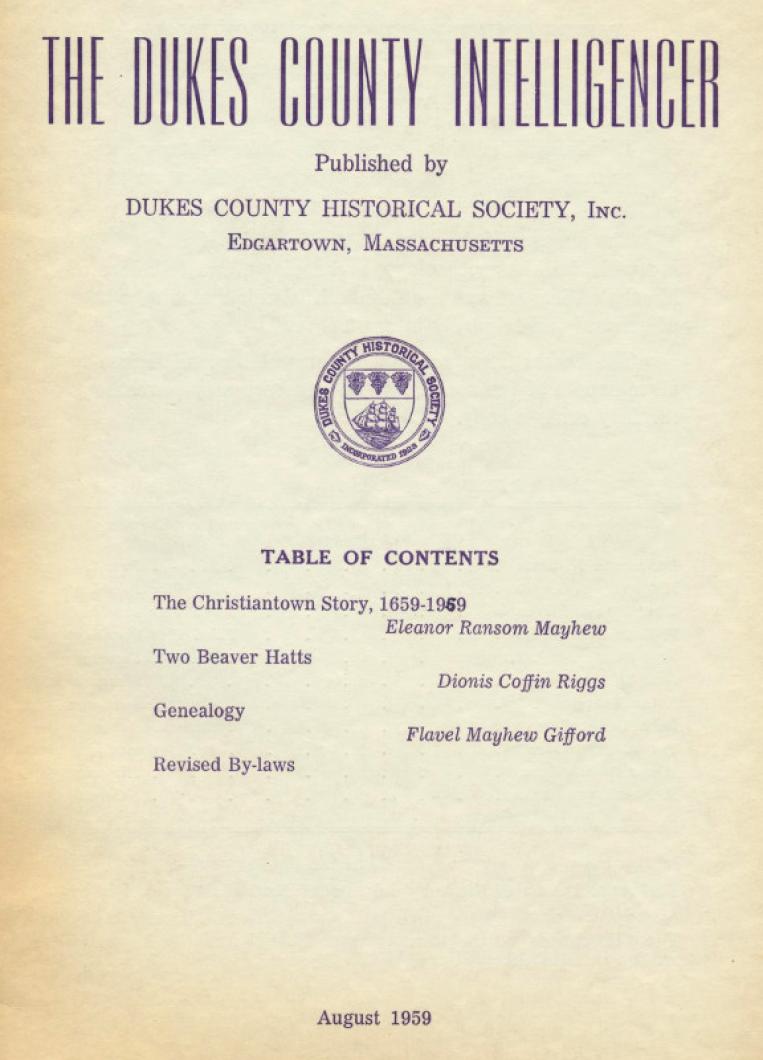
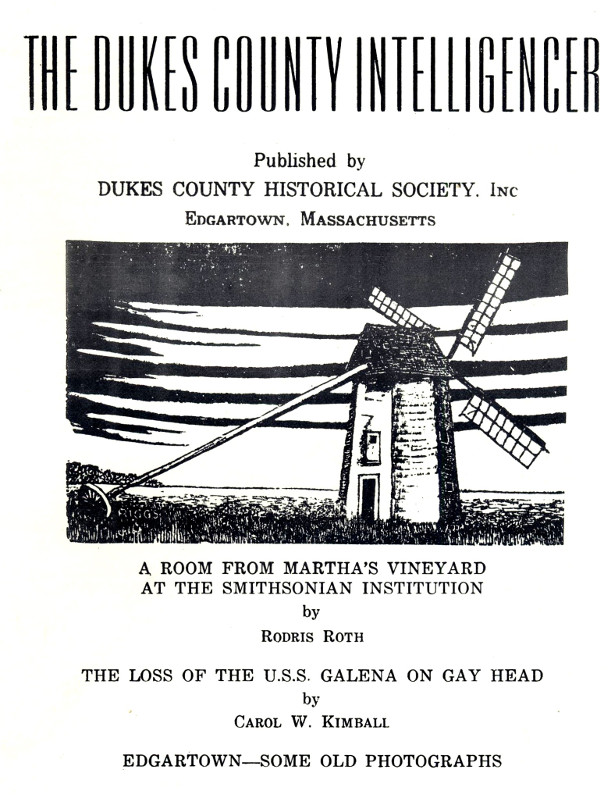
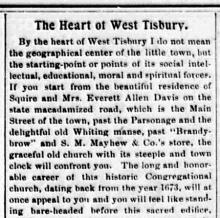
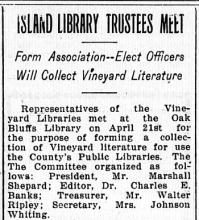
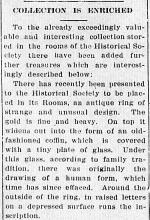

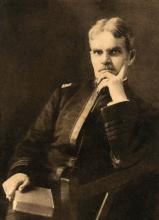
Comments